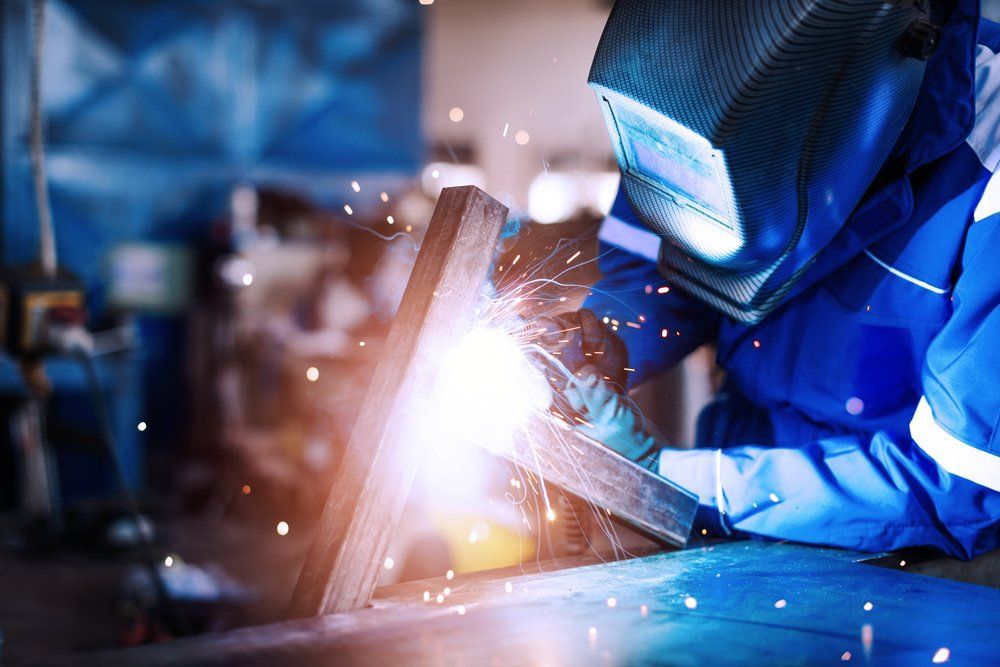4 Different Types of Welding and Their Uses
When you have a project that requires welding, you may think that the welding procedure will be the same every time. Even if you are aware that there are different welding techniques, whatever gets two bits of metal to stick together may seem good enough for you.
However, depending on your requirements and other factors like available materials, level of welding experience, and workspace, some types of welding may be better suited for your project than others. Read on to learn about the four most common types of welding.
1. Metal Inert Gas (MIG) Welding
MIG welding is also called gas metal arc welding (GMAW). Commonly recognized as one of the easiest welding techniques to learn, this type of welding requires an electrode wire to be fed through the welding torch. This wire melts and is called a filler metal as this metal is what creates the rivet rather than the metal that is being joined together.
As the electrode is fed through the torch and applied to the weld site, an externally supplied inert gas is expelled around the torch in order to shield the melted metal from outside contaminants. This means that MIG welding is not a great technique to use outdoors. Additionally, it can't be used to weld thick materials, and everything needs to be free of dirt, rust, and other debris for the weld to take.
However, this type of welding is ideal for thin metals and doesn't produce much fumes or heat. Thus, this is commonly used in auto repair work, as it is well-suited to more confined spaces.
2. Tungsten Inert Gas (TIG) Welding
Also known as gas tungsten arc welding (GTAW), this type of welding does not use a filler metal to join pieces together. Instead, it utilizes a tungsten electrode (that does not melt) to heat the base metals, effectively melting metal pieces together. Similar to MIG welding, TIG welding also requires the use of an external gas supply to shield the metal as it is melted. TIG welding is one of the most popular welding techniques in the industry, as it creates aesthetically pleasing clean welds and can weld thick materials such as stainless steel. It also doesn't produce spatter that has to be cleaned up later.
TIG welding does produce more heat and is best used with caution. It is also a more difficult type of welding to master.
3. Shielded Metal Arc Welding (SMAW)
Shielded metal arc welding, also known as stick welding, does not use externally supplied gas to shield the filler metal as it's being welded. Instead, the electrode creates an electric arc that prevents nitrates and oxides from affecting the welding process.
The main advantages of stick welding are its portability and cost-effectiveness. Since it doesn't require an external gas supply, the equipment costs are lower, and it can be used outside without any worry that the gas flow will be disrupted by the weather. Stick welding can even be used with dirty and rusted metal. However, stick welding spatters easily and often is not a great technique for thinner metals.
4. Flux-Cored Arc Welding (FCAW)
Flux-cored arc welding, like MIG welding, also relies on an electrode wire that is fed through the torch to create welds. Unlike MIG welding, however, flux-cored arc welding wire utilizes a wire that has a core made of flux, or a liquid agent that removes oxidation from the metals. Because of the flux's properties, this type of welding does not require an external gas to protect the weld site, so it can also be used outdoors.
Flux-cored arc welding also produces fewer fumes and waste, and it can be easier to learn than TIG welding, for example. However, it does produce a lot of heat, as well as slag and spatters that require cleanup.
These are a few of the most common welding methods available. Talk to the experts at Sam's Welding, Inc. , to learn more. We're happy to perform any welding job you have, big or small, as well as to recommend the best welding techniques for your unique project.
contact information
Phone: (619) 281-2709
Address: 4821 UNIVERSITY AVE STE B San Diego, California 92105
Serving The San Diego County: San Diego | El Cajon | La Mesa | Santee
License numbers:
#804664
Business Hours:
- Mon - Fri
- -
- Saturday
- -
- Sunday
- Closed
Emergency Services Available and Walk-ins Welcome





visit our location
Proudly Serving: San Diego, San Diego Metro, Chula Vista, La Jolla, Carmel Valley, Rancho Santa Fe, Fairbanks Ranch, Mira Mesa, Carmel Mountain, Rancho Bernardo, Rancho Penasquitos, Escondido, La Mesa, Spring Valley, Coronado, Point Loma, Bonita, El Cajon, Oceanside, Carlsbad, Solana Beach, & Del Mar.

